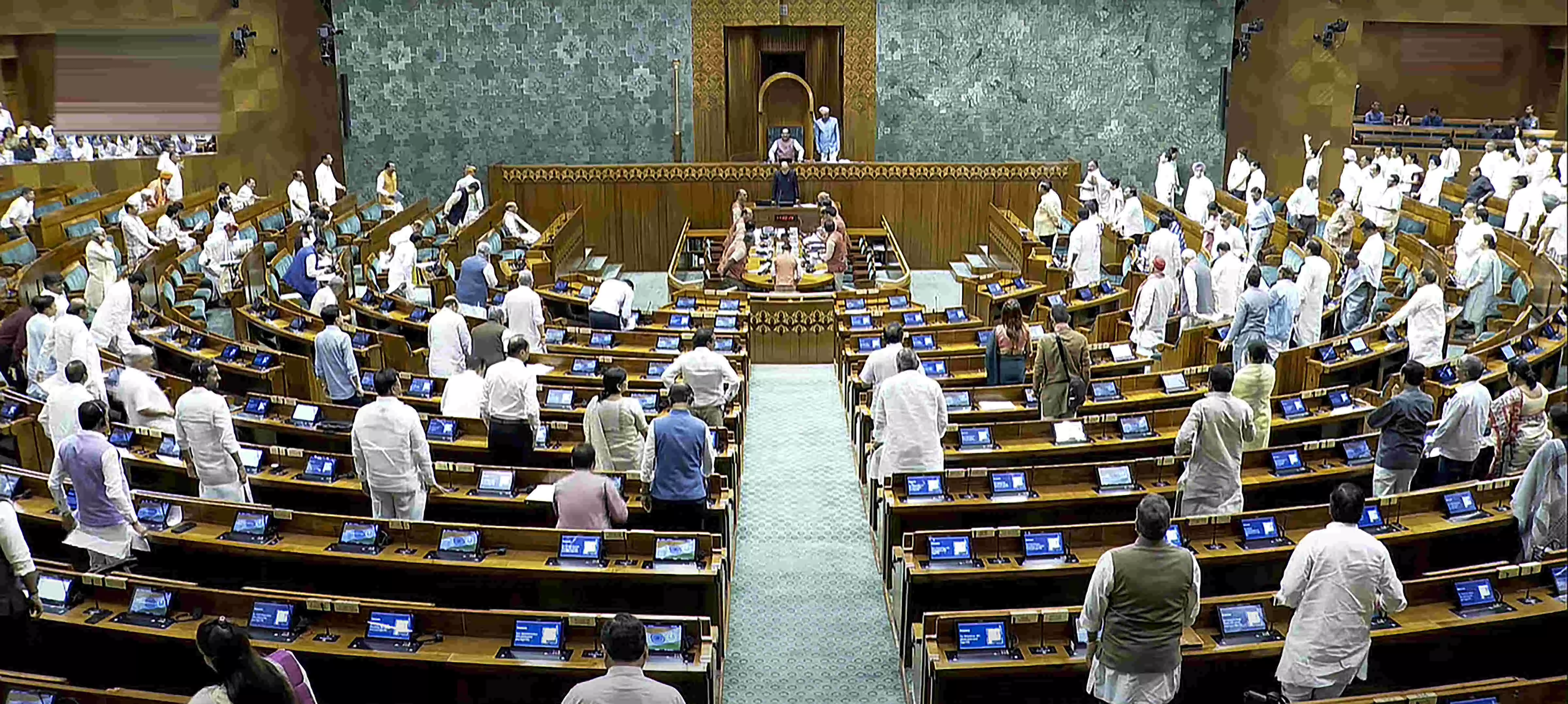Game-Changing Reforms

The passage of the National Sports Governance Bill by both Houses of Parliament marks a significant milestone in India’s journey towards reforming the way sports are managed and administered. Long plagued by allegations of inefficiency, opaque functioning, and political interference, many sports bodies have struggled to balance administrative control with the welfare of athletes. This legislation, once it receives presidential assent and is notified, promises a systemic overhaul aimed at ensuring transparency, accountability, and fairness in governance while giving athletes a stronger voice in decision-making.
One of the most notable features of the bill is its focus on fixed age and tenure caps for top posts in sports bodies. Limiting terms to a maximum of three consecutive stints or 12 years, and setting an age ceiling of 70 years—extendable to 75 in special cases—addresses the long-standing criticism of entrenched leaderships and lifetime presidencies in sports federations. By capping the executive committee size at 15 members, including a mandatory quota for women and sportspersons of outstanding merit, the law aligns with global calls for gender parity and athlete representation. This approach could reshape the culture of decision-making, moving it closer to athlete-centric governance rather than being dominated by administrators alone.
The establishment of the National Sports Board (NSB) as a central authority is another ambitious step. Empowered to recognise or suspend national sports federations, the Board will have the mandate to ensure compliance with fair election practices, financial transparency, and proper utilisation of public funds. Importantly, its power to act against irregularities is tempered by the requirement to consult relevant international bodies, maintaining harmony with global sporting statutes. By linking eligibility for government funding to recognition by the NSB, the bill creates a direct accountability mechanism—no federation can expect public money without adhering to governance norms. Perhaps the most transformative element of the legislation is the creation of a National Sports Tribunal. With over 350 sports-related disputes currently pending in various courts, athletes have often been left in limbo, their careers stalled by prolonged legal wrangles. The Tribunal, headed by a senior judge and empowered like a civil court, will offer a dedicated, fast-track mechanism for resolving disputes, with its orders challengeable only in the Supreme Court. This centralisation of jurisdiction could reduce forum-shopping and conflicting judgments, while the 30-day limit for appeals signals an intent to expedite justice in the high-stakes world of competitive sports. The bill also introduces the National Sports Election Panel, drawing retired officials from the Election Commission to oversee elections in sports bodies. This measure directly addresses concerns about manipulated or sham elections that have, in the past, entrenched certain administrations regardless of performance or probity. Regularised, transparent elections could encourage fresh leadership, bring in professional expertise, and enhance the credibility of federations in the eyes of athletes, sponsors, and fans alike.
By bringing all recognised sports organisations that receive government funding under the ambit of the Right to Information Act, the bill takes a bold step towards transparency. Even the BCCI, long shielded from such scrutiny, will have to register as a national sports federation with the NSB, especially with cricket’s inclusion in the 2028 Olympics. This could open the door to greater public oversight of the country’s most powerful sports body, potentially influencing governance standards in other sports as well. The government’s discretionary powers under the bill are wide-ranging. These include the authority to approve the use of national symbols or the word “India” in sports-related contexts, to relax provisions in public interest, and even to impose restrictions on national teams in extraordinary situations. While these powers could be vital in protecting the country’s image and responding to crises, they must be exercised with restraint to avoid politicisation or undue interference in sporting autonomy. The challenge will be to balance national interest with the independence of sports federations, particularly in an era when international sporting relations can be sensitive and politically charged. For athletes, the bill offers a promise of cleaner, more efficient systems where grievances can be addressed quickly, leadership is rotated regularly, and decision-making reflects their interests. For administrators, it lays down clear governance standards and accountability mechanisms, while also providing institutional clarity through bodies like the NSB, Tribunal, and Election Panel. However, the success of these reforms will ultimately depend on their implementation. Rules on paper must translate into practice—through consistent enforcement, fair appointments, and a commitment to transparency that is not selectively applied. If effectively executed, the National Sports Governance Bill could mark the beginning of a cultural shift in Indian sports administration, replacing patronage and opacity with professionalism and accountability. It can strengthen India’s standing in the global sporting community, improve athlete welfare, and ensure that governance structures keep pace with the country’s growing ambitions in international sport. But for this promise to be realised, the stakeholders—government, administrators, athletes, and civil society—must treat it not merely as a compliance exercise but as an opportunity to rebuild trust in the institutions that shape India’s sporting future.



